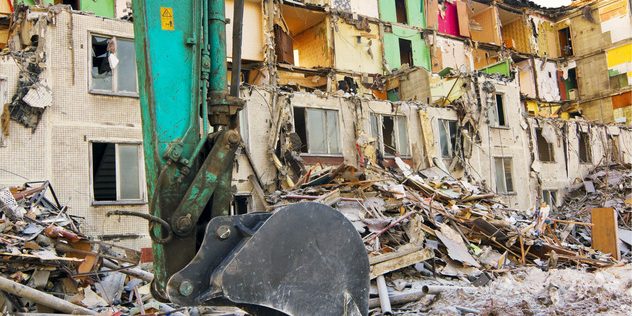Dilapidation Report Information – When to obtain a dilapidation report: Healthy, thriving neighbourhoods are always changing and growing. When this growth takes place in the form of new construction on property adjacent to that of your home or commercial property, however, you’ll need to take proper precautions in order to ensure there is a record of current condition before work begins.
Dilapidation reports are conducted by a neutral third party to prevent any conflict of interest and are carried out by professionals within the building trade in two stages. Property owners are encouraged to obtain a dilapidation report in order to document any pre-existing cracking or structural damage, or a lack thereof, before construction on an adjacent property begins. After demolition or major construction projects are completed, the property should then be evaluated a second time in order to prevent disputes in the event of property damage sustained as a direct result of the work being done on a nearby property.
Who Should Obtain a Dilapidation Report?
When you obtain a dilapidation report before and after major construction in the immediate vicinity of your property, you’ll be able to not only discover any existing damage but also to facilitate conflict resolution in the event of changes caused by nearby works. For builders and developers, making the effort to obtain dilapidation reports is an effective way of preventing disputes over any changes to nearby structures over the course of your construction project.
Property owners who are planning construction projects on their own properties should also obtain a dilapidation report, as it will document any damages or areas of structural weakness before work begins.
Why You Should Obtain a Dilapidation Report
The building of a new retaining wall, alterations to existing structures, road construction, demolition projects and underground tunnelling can all cause damage to nearby structures. Heavy construction often requires the removal of substantial amounts of soil, the use of major machinery and even the destruction of existing structures.
Even when these projects are carried out carefully and effectively managed, there’s always the potential for damage to houses, businesses and structures on adjoining properties. When builders and owners obtain a dilapidation report before work begins, all involved parties are protected against messy disputes in the event of unintended structural damage. Because they’re such an important part of dispute management, many Councils actually require dilapidation reports as a standard step in the approval process before major construction begins.
With an accurate report reflecting the condition of your property before and after major construction within the zone of influence, you can determine what, if any, damage can be attributed to nearby works. Before heavy construction, excavation or demolition projects commence, it’s important to obtain a dilapidation report to protect yourself, your property and to prevent messy disputes.
Houspect Melbourne Building Inspections – Buy, Build, Invest and Sell with Confidence







